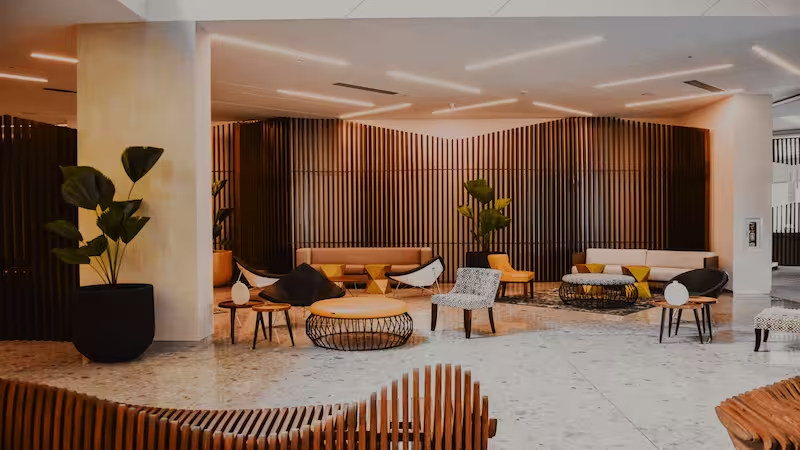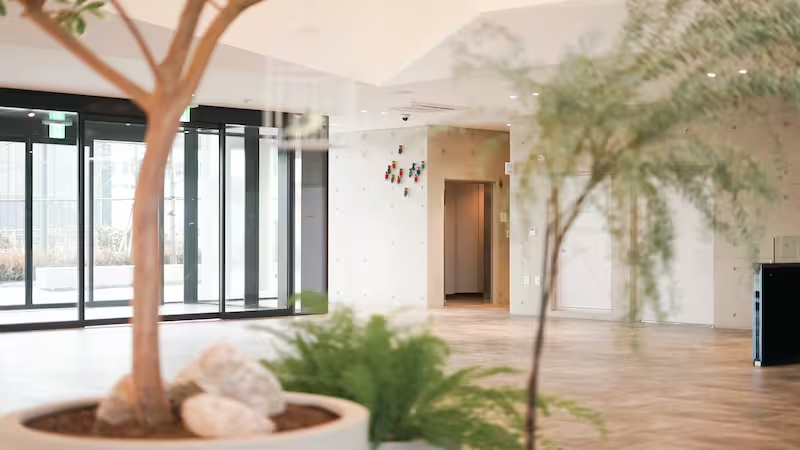
Table of Content
When you step into a corporate office or a luxury retail store, your gaze is likely to be taken by those seamless video wall displays that stitch images together so perfectly, that you can’t even see the joins. The magic behind these walls is the blend of state-of-the-art technology, rigorous market competition, and forward-thinking brands that see the potential in merging aesthetics with technology.
In this article, we take a closer look at seamless video walls, exploring the types, the technologies that drive them, and the giants who dominate the market.
Types of Seamless Video Walls
LED Video Walls
LED video walls consist of multiple LED display panels or tiles pieced together to form a single, large screen. These panels use light-emitting diodes (LEDs) to produce images that provide a bright and vibrant display. LED video walls have become increasingly prominent in diverse settings, from control rooms and corporate lobbies to auditoriums and digital signage. Their seamless and scalable design makes them particularly suitable for installations that require customization.

LED walls offer unparalleled brightness, true-to-life colors, and wide viewing angles. The flexibility they bring allows users to set up tiles in unique configurations that ensure a tailored display for every project.
LCD Video Walls
In LCD video walls, Liquid Crystal Display technology sandwiches liquid crystals between two panels of polarized glass. When electrically charged, these crystals realign to display specific colors, forming the image we see on the screen. Among the benefits of choosing LCD walls are their higher pixel density, suitability for close-up viewing, and energy efficiency. They typically come at a more affordable price point. Larger panel sizes simplify both the installation and servicing process, and they boast an installation depth comparable to their LED counterparts.
Differences in Technology
While both LED and LCD video walls provide immersive visual experiences they differ fundamentally in their technology. LED walls use light-emitting diodes to produce images that offer vibrant colors and high brightness. In contrast, LCDs utilize Liquid Crystal Display technology, with liquid crystals realigning between polarized panels when electrically charged to form images. This results in LCDs having a higher pixel density, ideal for closer viewing. LCDs typically consume less energy and are more cost-effective than LEDs. However, LED walls tend to have better viewing angles and a longer lifespan.
Technologies Behind Seamless Video Walls
- Bezel Design: Modern video walls prioritize ultra-narrow or even bezel-less designs. This minimalistic frame ensures that the transition between individual panels is almost invisible, contributing to the illusion of a single expansive display.
- Calibration Technologies: Uniformity in brightness and color across panels is crucial. Advanced calibration technologies ensure that every panel matches its neighbors in terms of intensity and hue, preventing any discernible breaks in the visual.
- Software Solutions: To achieve a truly seamless experience, specialized software solutions manage content distribution across the panels. These tools also facilitate real-time adjustments, ensuring optimal display performance and consistent visuals.
- Mounting and Alignment Systems: Precision is crucial. Innovative mounting solutions ensure each panel is meticulously aligned, preventing misalignments that could disrupt the seamless effect.
- Integrated Cooling Mechanisms: Heat can affect display performance. By integrating efficient cooling systems, these video walls maintain their optimal visual quality and longevity without external vents or noise disruptions.
Market Leaders in Seamless Video Walls

Industry Leaders
- Samsung
Samsung is a globally known brand that sets high standards with its advanced research and design. Their video walls are popular for their clear displays, accurate colors, and the ability to fit different settings such as airports and retail stores.
- LG
This is a major name in South Korea that stands out with its focus on OLED technology. Their screens display sharp colors, and deep blacks, and offer flexibility.
- Barco
Based in Belgium, Barco offers specialized solutions, especially in calibration and visualization. They make sure their video walls show consistent, high-quality images by combining both hardware and software.
- Christie
Based in Canada, Christie offers a wide range of products for different needs – from entertainment spots to offices and schools. They're known for dependable, high-quality displays.
Product Offerings
- Samsung
Samsung's product lineup for video walls is vast. One of their standout offerings is The Wall with its MicroLED technology, which provides brilliant clarity and rich colors, making it suitable for a range of applications. Their UHD video walls are also renowned for delivering sharp, clear images, making them favorites in professional settings.
- LG
LG's claim to fame in the video wall segment is largely due to its OLED technology. Their OLED video walls ensure deep blacks, outstanding contrast, and enhanced flexibility. The ability to produce thin, even bendable displays has set them apart in the market. Additionally, their IPS (In-Plane Switching) panels offer superior viewing angles, ensuring the display looks excellent from any direction. Their flagship offering in the video walls segment is LG Magnit which sets a new standard for large-scale displays.
- Barco
Barco excels in providing tailor-made solutions for different industry needs. Their UniSee LCD video wall platform, for instance, offers bezel-less viewing and modular touch capabilities. Additionally, they have proprietary calibration technology that ensures the video wall remains consistent in color and brightness over its lifespan.
- Christie
Christie's strength lies in its versatile offerings. They cater to a variety of sectors, from entertainment to corporate, with products like the Extreme Series – LCD panels designed with ultra-narrow bezels for near-seamless viewing. They also emphasize control and management tools, ensuring users can easily handle and adjust their video walls for optimal performance.
Market Presence
The true testament to these companies' prowess is their global reach. Samsung and LG, both from South Korea, have a dominant presence across Asia, Europe, and the Americas. Barco, originating from EU, has expanded its footprint to over 90 countries, with a particular focus on high-tech professional markets. Christie has strategically positioned itself across different continents, leveraging its strong partnerships and commitment to innovation to cater to both mainstream and niche sectors.
Conclusion
Seamless video walls have become vital across businesses, venues, and public places. They immerse, engage, and bring content to life without the distraction of borders. Think of the attention-grabbing ads found in malls to immersive museum displays, seamless video walls are enhancing how we share and consume information. And with companies like Samsung and LG at the front run, technology is only getting better.




.avif)



